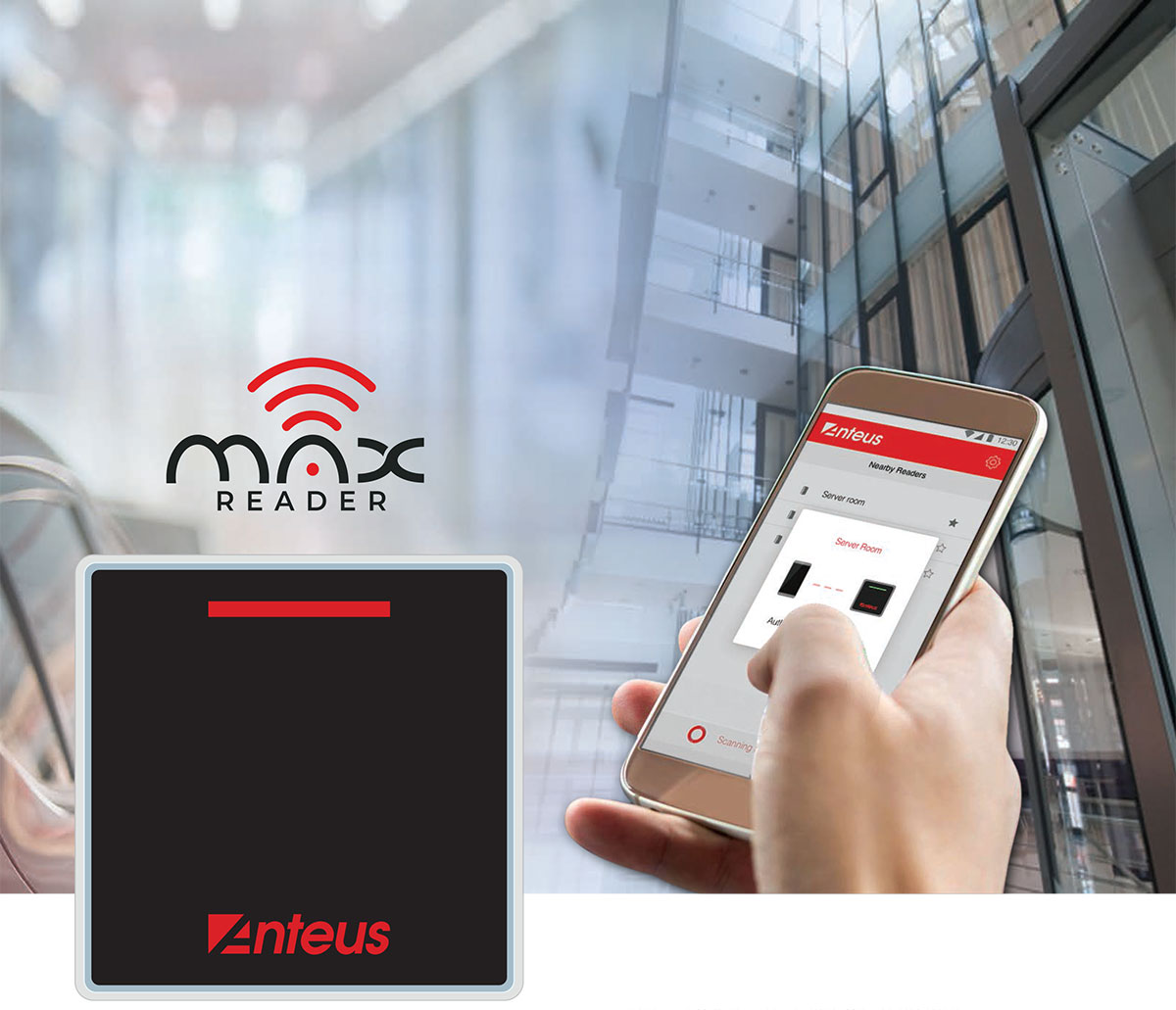RFID? NFC? BLE? Mit jelentenek ezek?
A beléptetőrendszerhez kapcsolódó kártyaolvasókat milyen szabvány szeretné integrálni? Választhat RFID, NFC vagy BLE megoldások közül! Ez az a két mondat, amit ebben a formában sosem fog hallani tőlünk, hiszen nagyon kevesen tudják, hogy pontosan milyen lehetőségek vannak vezeték nélküli azonosításra a mai világban és mi ezek közt a különbség. Ebben a cikkünkben ezt a kérdést járjuk körül.
Kezdjük is az elején. Olyan világban élünk, amikor nem akarnak a munkatársak zörgő kulcssomókkal mászkálni, nem szeretnék leadni a portán az iroda kulcsot (vagy ha elfelejtik, akkor bosszankodva kelljen visszafordulni). Sőt, olyan világot élünk, amelyben egyre kevésbé szeretjük használni a készpénzt. Legyen szó kártyás fizetésről, vagy éppen beléptetésről, ez a három szabvány: RFID, NFC vagy BLE jelenti a megoldást arra, hogy egyetlen kártya odaérintése vagy közelítése után számítógépes rendszerek induljanak be és végezzék el a kívánt tranzakciót (fizetést, vagy épp egy ajtó kinyitását).
RFID, avagy rádiófrekvenciás azonosítás (RFID = Radio Frequency Identification)
A módszer elég gyakran használt, hiszen valószínűleg az Ön zsebében lévő bankkártya is ezen az elven működik. Gyakorlatilag ehhez az eljáráshoz szükség van egy rádiófrekvenciás jeladóra (a szakmában és angolul: tag), azaz „címkére” (ez a mikrochip a bankkártyában, beléptető kártyában vagy más kivitelű azonosítóban, az egyszerűség kedvéért a továbbiakban összefoglaló néven azonosítónak hívjuk) és egy „olvasóra” (mint amilyen a bankkártya terminál vagy az ajtó melletti olvasó).
A leggyakoribb az úgy nevezett passzív-RFID: Amikor az azonosítót az olvasóhoz érintjük (közelítjük), akkor az utóbbi által kibocsátott rádiófrekvenciás jel áramot indukál az azonosítóban, mely elég ahhoz, hogy az visszaküldje a rajta tárolt információt a rendszernek (amely ez után felismeri az azonosítóba „rejtett” kódok alapján, hogy a használó jogosult-e belépni, vagy éppen a megadott összeget kifizetni).
Létezik fél-passzív és aktív RFID is, előbbinél az azonosító tartalmaz egy kis elemet, így nem kell az energiát átvennie az olvasótól. Gyorsabban és biztosabban reagál. Utóbbi pedig komolyabb, beépített energiaforrással rendelkezik, ez nagyobb olvasási távolságot és nagyobb memóriakapacitást jelent. Általában egy ilyen aktív RFID címke élettartama 8-10 év. Mérte, ára és karbantartási igénye miatt napjainkban a használata nem jellemző, csak speciálisa területeken alkalmazzák.
Beléptetéskor tehát ez a fajta azonosítás úgy működik, hogy a munkatárs egy RFID azonosítót (kártyát, óraazonosítót, kulcstartót, stb.) közelít egy olvasóhoz. Az azonosító az olvasó a passzív azonosító működéséhez áramot indukál, leolvassa az adatot az azonosítóról, elküldi az adatokat a beléptető rendszernek, amely ellenőrzi a belépési jogosultságot és kinyitja az ajtót. Mindez legfeljebb pár másodperc alatt lezajlik.
NFC, a közeli kommunikáció (NFC = Near Filed Communications)
Első érzésre és csak a beléptető rendszerekben való használatuk szerint szemlélve, hasonló is lehetne az imént bemutatott RFID-hez, de mégis egy másmilyen technológiáról van szó. Lényegében ez a technológia már része a mobilkommunikációnak, ugyanis az újabb okostelefonok, tabletek is már támogatják ezt.
Úgy működik, hogy adott két NFC-t támogató eszköz, melyeket, ha összeérintünk (egymáshoz közelítünk), akkor elindul köztük egy kommunikáció. A hétköznapokban a legismertebb használata szintén a fizetéshez kötődik, amikor nem a bankkártyát, hanem a telefont érinti az ember a kártyaolvasóhoz és ugyanúgy megtörténik a fizetés, de ilyenek a PayPass fizetési rendszerek is.
Ehhez a kommunikációhoz nem kell párosítási kód, vagy előzetes bejelentkezés, hasonlóan az RFID-s megoldáshoz itt is van passzív és aktív kommunikációra lehetőség. Például egy matricába, zsetonba, kártyába vagy nagyjából bármibe elhelyezett chip segítségével készíthető úgynevezett NFC címke (azonosító), amelyre rá tudjuk helyezni (vagy közelíteni) az okostelefont, máris elindul egy kommunikáció. Ez esetben a chip passzív feladatot lát el, míg aktív kommunikáció akkor történhet, ha két mobiltelefon egymás közt végez valamilyen feladatot.
Beléptetéskor ez a fajta azonosítás úgy működik, mintha a telefon lenne a kártya, ebben az esetben az NFC-s mobiletelefon működik azonosítóként.
BLE, azaz az alacsony energiaigényű Bluetooth (BLE = Bluetooth Low Energy)
Ezzel a megoldással nagyjából 8-10 méter távolságra levő eszközök kapcsolódását tehetjük lehetővé. Tudvalevő, hogy a klasszikus Bluetooth kapcsolatok sok energiát fogyasztanak, ellenben a BLE ennek az energiahatékonyabb változata. BLE szabványt is támogató RFID olvasók használata esetén azonosításra, beléptetésre is használható.
BLE kapcsolattal lehet például összekötni az újabb okosórákat az okostelefonokkal (így továbbítja például a pulzus vagy lépés adatokat az óra a telefonnak), vagy a vezetéknélküli fejhallgatók is ezt az eljárást használják.
Természetesen a beléptetésben is komoly előnye van, segítségével az okostelefonok is nagy szabadsággal használhatók azonosítóként. Ez egyébként NFC-vel is lehetséges, de iPhone esetében az NFC működési mód operációs rendszer szinten meg van nehezítve, sokáig egyáltalán nem is lehetett erre a célra használni. Emiatt és más előnyök miatt fejlesztettek a beléptető rendszereket gyártó piacvezető cégek BLE kompatibilis olvasókat. A technológia segítségével a rendkívül kényelmestől a magas biztonságú megoldásokig terjed a felhasználás lehetősége.
Megvalósítható például, hogy csak az okostelefon feloldása után (pl. biometrikus, PIN vagy jelkód azonosítással) történhessen meg az olvastatás a beléptető rendszernél, ami rendkívüli biztonságot nyújt a gyors, ám kétlépcsős azonosítás által. Emellett egyszerűbb azonosítási módok is lehetségesek. Beállítható kátyamód, illetve távoli olvastatási mód, ami akár a zsebben tartott okostelefonnal lehetővé teszi a beléptetést vagy az appban történő gombnyomással több méter távolságból kinyitja az ajtót vagy sorompót.
Összegezve: melyik a jobb megoldás?
Az adott helyszínen alkalmazandó legjobb megoldás függ az elvárt biztonsági és kényelmi elvárásoktól, illetve a konkrét beléptetési feladatoktól. Az Anteus MaxReader megoldása mindegyik azonosítási formára rugalmas és kényelmes megoldást kínál. Legyen szó kártyáról, speciális azonosítóról, mobilazonosítóról, magas biztonsági szintről vagy olcsó megoldásról, a MaxReader kitűnő választás Android, iPhone készülékeken és okostelefon használata nélkül is.
Vegye fel velünk a kapcsolatot és beszéljük meg, hogy az Ön beléptetőrendszere hogyan lehet naprakész.


